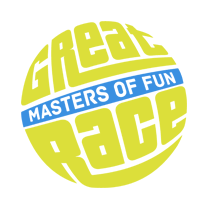A perfect evening of family, snacks and a board game- sound just amazing, right?
The craze for board games is growing at an exponential rate. I don’t know about you but we find that board games combine the perfect elements of socialising with activities while working together on a common goal. You find that you’re not sitting around talking about all the things that have been worrying you or catching up on gossip (let’s face it, that’s rarely healthy). But have you ever wondered about where board games came from?
Board games aren’t a new invention, sure the packaging is all new and we are sure ancient Greeks weren’t sitting around buying each other out of the property market- I’m looking at you Monopoly. We don’t have exact time frames on the first game ever played but we do know is that they did exist, very, very long ago- in prehistoric period- as well. So no, it is nowhere a ‘modern’ concept.
A TALE AS OLD AS TIME…
Various archaeological research, studies and evidence suggests that Ancient Egyptians played indoor games. Some of the earliest recorded board games include the one named Mehen, which is considered to be as old as 3000 BC. The Mehenboard looked like a snail shell or a curled up snake.
Senet: a popular pre-dynastic game
Senet was another which was seemingly quite popular in the pre-dynastic period. It was a played on a 30 square grid and had two pawn sets. Rules of this Egyptian royal pastime are all foreign to us, we haven’t been able to find any ancient Egyptians to tell us the rules but we have found their tools for it. This game was also mentioned in ‘The Book of the Dead’.
The Egyptian pharaohs were pretty interested in playing board games, it seems. The thing special about Senet is that it was tied with mysticism and spirituality. The Egyptians strongly believed that those who play the game and won would be blessed and guarded by Ra and other Gods. So the game has been found buried in ancient tombs alongside the most noble.
While Senet was a game which was perhaps available to the royals only (just like today’s property market), the popular game of Ur was something more common and available for the populous. For those who think that Backgammon is oldest and most popular game, let us tell you the game of Ur holds the record!
Strategy games were the dominant form of board game
Here’s a game with a hefty title- Ludus duodecim scriptorium is a game similar to Backgammon that was played in Ancient Rome. It is said to be the predecessor to Backgammon with a similar focus on strategy and long-play.
Strategy games started to become the dominant form of game play by around 1300 BC, as an influence of wars. This moved away from other games with spiritual affiliations as the people became focused on individual determination as opposed to godly influence. Ludus latrunculorum was one such popular game back then and is said to be somewhat similar to Chess.
It is to be noted that up uptil around 500BC, board games were reserved for adults. They were seen as a serious past-time and recreation wasn’t highly valued. However in Rome in 500 BC, archaeologists have recorded the first instance of Hop-Scotch. A game still played today that was popularly played by children
BEYOND 400AD
Moving to 400 AD we start to find wide-spread evidence of games apparently played on checkerboards. These were all called Tafl games. It is believed that Chaturanga, an Indian strategy game which is in turn closely related chess, branched off from Tafl games. So no, chess also isn’t new!
Since then we see the proliferation and diversification of games that are more closely related to those currently played. You can find evidence of many modern games in ancient history, which shows that the essential combinations of luck, strategy and skill are imperative to a successful board game and the widespread use of a population.
